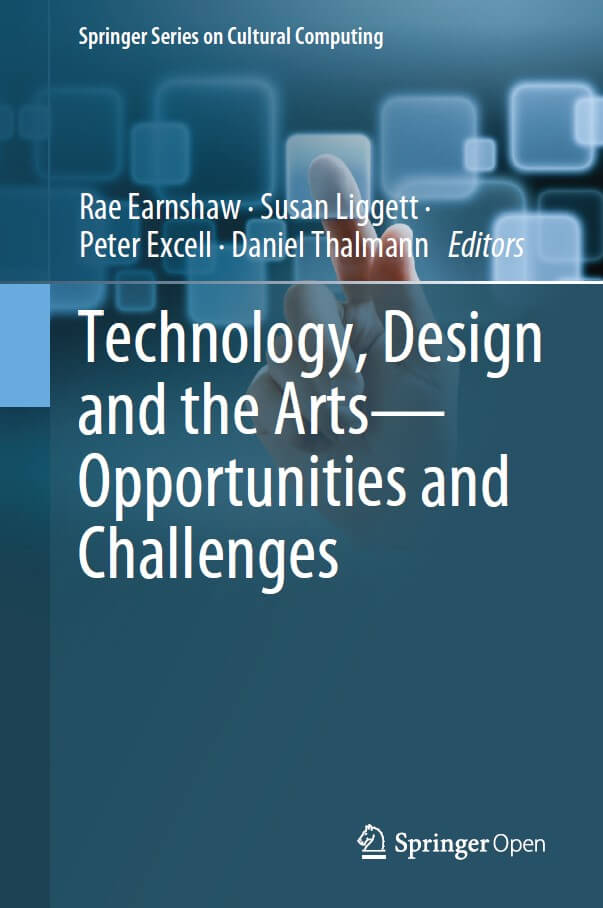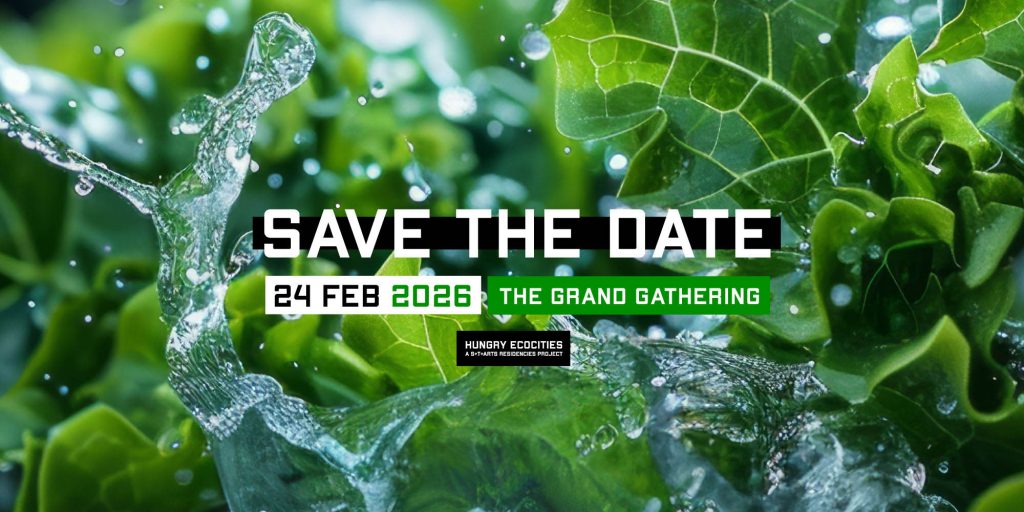[NEW BOOK] Technology, Design and the Arts – Opportunities and Challenges
Editors: Rae Earnshaw, Susan Liggett, Peter Excell, Daniel Thalmann
This open access book details the relationship between the artist and their created works, using tools such as information technology, computer environments, and interactive devices, for a range of information sources and application domains. This has produced new kinds of created works which can be viewed, explored, and interacted with, either as an installation or via a virtual environment such as the Internet. These processes generate new dimensions of understanding and experience for both the artist and the public’s relationships with the works that are produced. This has raised a variety of interdisciplinary opportunities and issues, and these are examined.
The symbiotic relationship between artistic works and the cultural context in which they are produced is reviewed. Technology can provide continuity by making traditional methods and techniques more efficient and effective. It can also provide discontinuity by opening up new perspectives and paradigms. This can generate new ideas, and produce a greater understanding of artistic processes and how they are implemented in practice.
Tools have been used from the earliest times to create and modify artistic works. For example, naturally occurring pigments have been used for cave paintings. What has been created provides insight into the cultural context and social environment at the time of creation. There is an interplay between the goal of the creator, the selection and use of appropriate tools, and the materials and representations chosen.
Technology, Design and the Arts – Opportunities and Challenges is relevant for artists and technologists and those engaged in interdisciplinary research and development at the boundaries between these disciplines.
Book Contents
PART I – A PANORAMIC VIEW OF THE FIELD
1. Introduction and Background to Technology and the Arts
Rae Earnshaw
2. Positioning the Arts in the Research Process: Perspectives from Higher Education
Susan Liggett
PART II – FACILITATING COMMUNICATION BETWEEN THE ARTS, TECHNOLOGY, AND AUDIENCES
3. Framing the Conversation: The Role of the Exhibition in Overcoming Interdisciplinary Communication Challenges
Susan Liggett and Mike Corcoran
4. Modern Communication Technologies and the Marxist Understanding of Scientific Cognition
Naira Danielyan
5. Use of Digital Holography to Re-Encode and Image Chinese Movable Type Printing
Shuo Wang, Ardeshir Osanlou, and Peter Excell
PART III – INTERACTIONS BETWEEN THE ARTS AND DATA
6. The FOREVER-DO Game: A Big Data Fishing Expedition
Jill Townsley and Carlo Ferigato
7. Searching for New Aesthetics: Unfolding the Artistic Potential of Images Made by the Scanning Electron Microscopy
Anastasia Tyurina
8. Interspecific Interactions: Interaction Modes Between Sound and Movement in Collaborative Performance
Manoli Moriaty
9. Between Presence and Program: The Photographic Error as Counter Culture
Tracy Piper-Wright
10. Signs of Surveillance
Daniel Buzzo
PART IV – AUDIO VISUAL INSTALLATIONS TO GENERATE COLLECTIVE HUMAN RESPONSES
11. Coral Voices
Marlena Novak and Jay Alan Yim
12. Cyberdreams: Visualizing Music in Extended Reality
Jonathan Weinel
13. Augmenting Virtual Spaces: Affective Feedback in Computer Games
Stuart Cunningham, John Henry, and Jonathan Weinel
PART V – THE CONVERGENCE OF DIGITAL DESIGN, THE ARTS, COMPUTING, AND THE ENVIRONMENT
14. Chandini (A Bride for the Moon)
Rachel Davies and Daniel Saul
15. Digital Moving Image Installations and Renewable Energy: 1994–2018
Chris Meigh-Andrews
16. From Digital Nature Hybrids to Digital Naturalists: Reviving Nature Connections Through Arts, Technology and Outdoor Activities
L. Edwards, A. Darby, and C. Dean
PART VI – THE USE OF VIRTUAL REALITY AND AUGMENTED REALITY TO EXTEND CREATIVITY, REACH, AND ENGAGEMENT IN THE ARTS
17. Virtual Reality Holography—A New Art Form
I. Pioaru
18. In Darwin’s Garden: An Evolutionary Exploration of Augmented Reality in Practice
Alan Summers
19. Creation of Interactive Virtual Reality Scenarios as a Training and Education Tool
Rinat R. Nasyrov and Peter S. Excell
PART VII – THE FUTURE OF INTERDISCIPLINARY RESEARCH
20 Interdisciplinary Research and Development—Opportunities and Challenges
Rae Earnshaw



